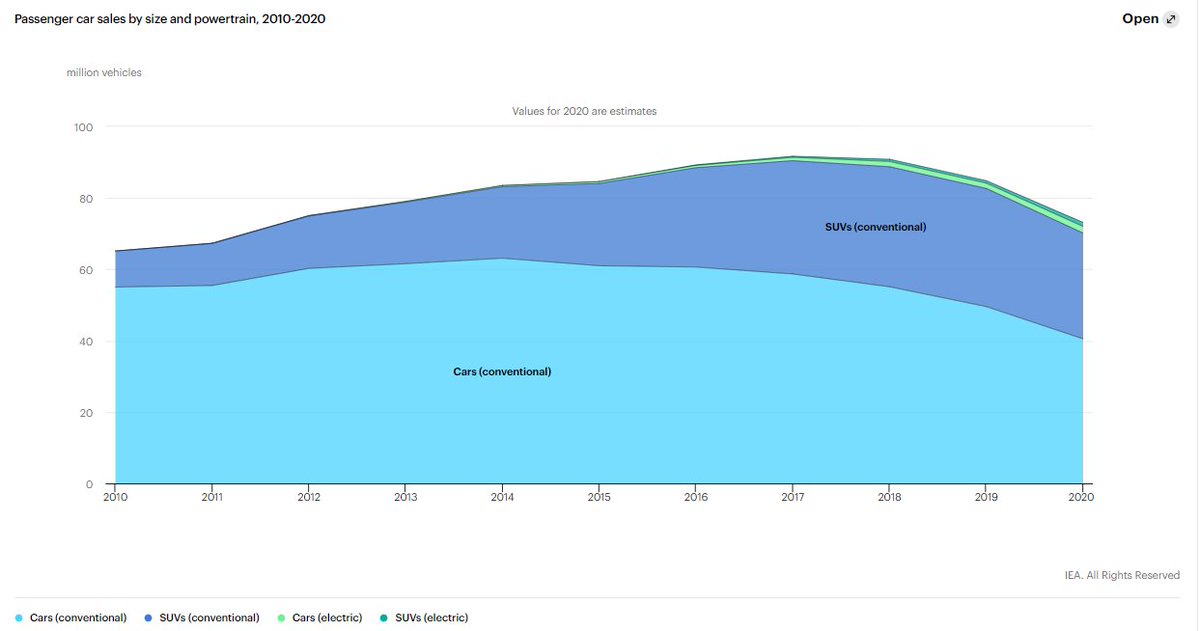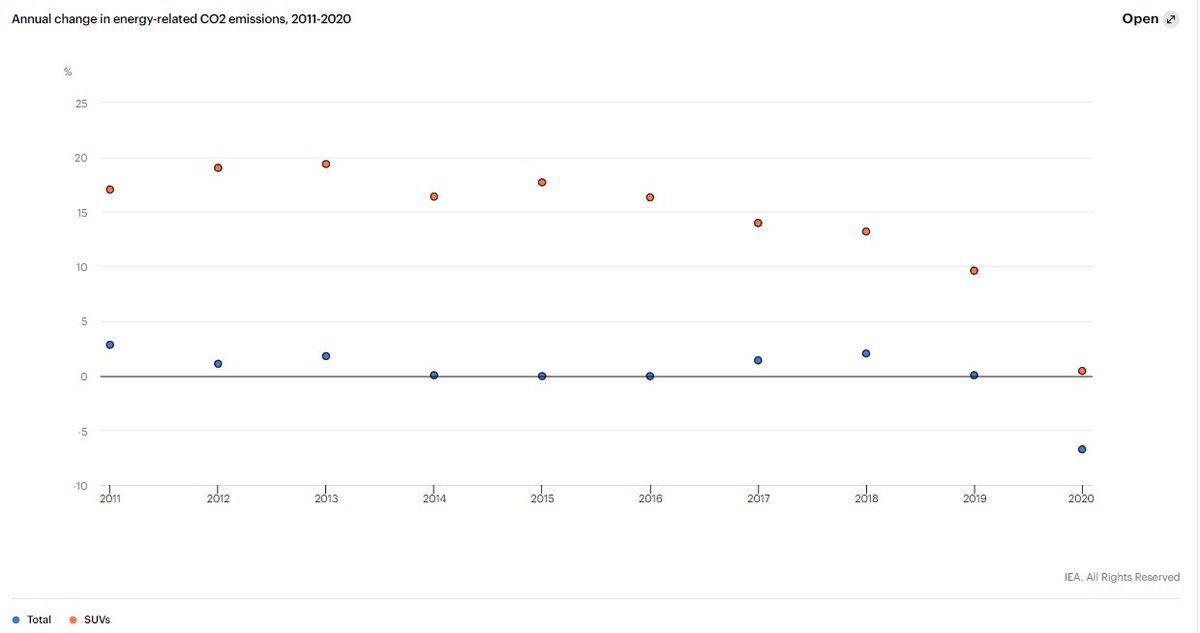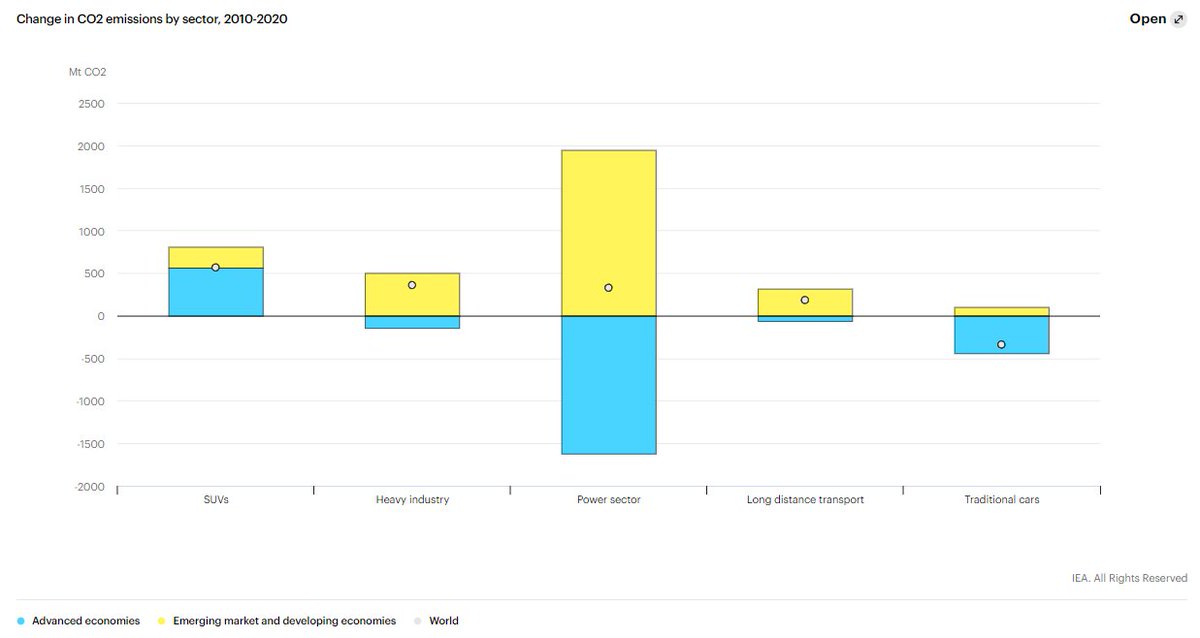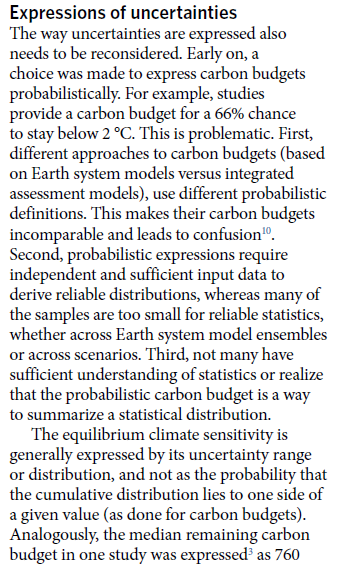
THREAD: Sports Utility Vehicles (SUVs)
Global car sales shrank by ~14% in 2020
* Sales of electric cars grew ~50% (from a very low level)
* Sales of SUVs declined ~10%, but share of sales went from 39% to 42%
→ What about emissions from SUVs?
1/
iea.org/commentaries/c…
Global car sales shrank by ~14% in 2020
* Sales of electric cars grew ~50% (from a very low level)
* Sales of SUVs declined ~10%, but share of sales went from 39% to 42%
→ What about emissions from SUVs?
1/
iea.org/commentaries/c…

Emissions from SUVs are estimated to have seen a slight increase of 0.5% in 2020, despite global emissions down ~7%.
"Despite the effects of the pandemic on overall car use, SUVs consumed more oil last year than they did in 2019"
2/
"Despite the effects of the pandemic on overall car use, SUVs consumed more oil last year than they did in 2019"
2/

"Oil consumption from SUVs reached 5.5 million barrels per day in 2020"
"Remarkably, we estimate that the increase in the overall SUV fleet in 2020 cancelled out the declines in oil consumption by SUVs that resulted from Covid-related lockdown measures"
3/
"Remarkably, we estimate that the increase in the overall SUV fleet in 2020 cancelled out the declines in oil consumption by SUVs that resulted from Covid-related lockdown measures"
3/
"SUV emissions are comparable to those of the entire maritime industry, including international shipping"
"Emissions from SUVs have nearly tripled over the past decade"
4/
"Emissions from SUVs have nearly tripled over the past decade"
4/
"we estimate that the reduction in oil demand from the increased share of electric vehicles in the overall car market in 2020 – around 40,000 barrels a day – was completely cancelled out by the growth in SUV sales over the same period."
5/
5/
"An estimated 9 million people delayed the replacement of their old car, and the prolonged use of these older, less-efficient vehicles increased oil demand by 50,000 barrels a day in 2020, according to IEA analysis."
6/
6/
"Over the past decade, SUVs were the only area of energy-related emissions growth in advanced economies, adding 300 Mt CO2. Across all other sectors of the economy and other forms of transport, carbon emissions remained flat or declined."
7/
7/

And shifting to electric SUVs does not help much, as it puts more demand on resources: "The strong consumer preference for SUVs has implications for clean energy transitions more broadly, notably in terms of electricity demand, batteries and raw materials."
8/
8/
Worth reading this post by @Laura_Cozzi_ & @ApostolosPetro1. It contains some rather concerning statistics...
iea.org/commentaries/c…
9/9
iea.org/commentaries/c…
9/9
• • •
Missing some Tweet in this thread? You can try to
force a refresh















